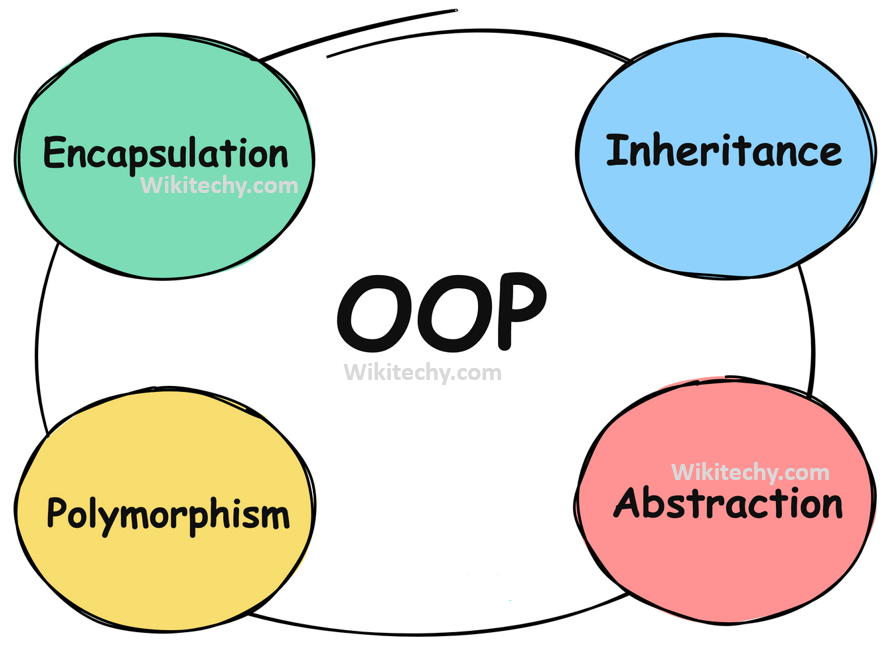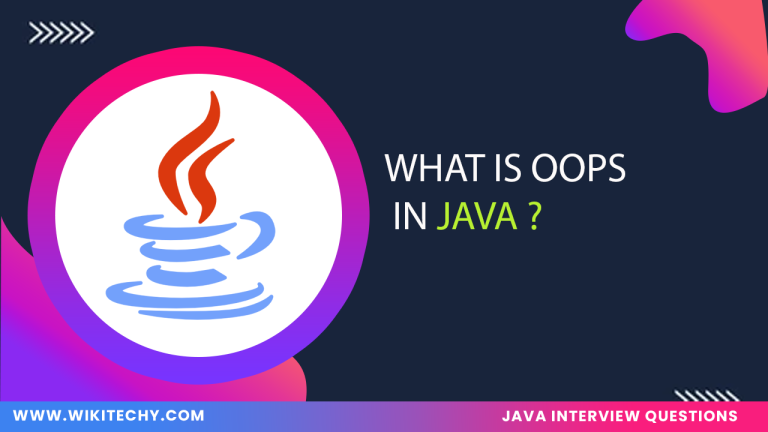Definition:
Object-Oriented Programming (OOP) is a programming paradigm based on the concept of “objects“, which can contain data (in the form of fields or attributes) and methods (functions) that act on the data. Java is a pure object-oriented language where everything is modeled as an object. OOP allows the creation of reusable and modular code that models real-world entities.
Contents
In Java, the four main principles of OOP are:
- Encapsulation
- Inheritance
- Polymorphism
- Abstraction

Example:
// Demonstrating OOP Principles
// 1. Encapsulation: Class with private fields and public getters/setters
class Person {
private String name;
private int age;
// Constructor
public Person(String name, int age) {
this.name = name;
this.age = age;
}
// Getters and Setters
public String getName() {
return name;
}
public void setName(String name) {
this.name = name;
}
public int getAge() {
return age;
}
public void setAge(int age) {
this.age = age;
}
// Method
public void introduce() {
System.out.println("Hello, my name is " + name + " and I am " + age + " years old.");
}
}
// 2. Inheritance and Polymorphism
class Student extends Person {
private String course;
public Student(String name, int age, String course) {
super(name, age); // Calling the parent class constructor
this.course = course;
}
// Overriding the introduce method
@Override
public void introduce() {
System.out.println("Hi, I am " + getName() + ", a " + course + " student, and I am " + getAge() + " years old.");
}
}
// 3. Abstraction
interface Vehicle {
void start();
void stop();
}
class Car implements Vehicle {
@Override
public void start() {
System.out.println("Car is starting...");
}
@Override
public void stop() {
System.out.println("Car is stopping...");
}
}
public class OOPExample {
public static void main(String[] args) {
// Encapsulation
Person person = new Person("Alice", 30);
person.introduce();
// Inheritance and Polymorphism
Student student = new Student("Bob", 20, "Computer Science");
student.introduce();
// Abstraction
Vehicle car = new Car();
car.start();
car.stop();
}
}
Output:
Hello, my name is Alice and I am 30 years old.
Hi, I am Bob, a Computer Science student, and I am 20 years old.
Car is starting...
Car is stopping...
Features of OOP in Java:
1.Encapsulation:
- Bundling the data (fields) and methods (functions) that operate on the data into a single unit, i.e., a class. It also hides the internal state of objects from outside interference.
2.Inheritance:
- Mechanism where one class (child class) inherits properties and behaviors from another class (parent class), allowing code reuse.
3.Polymorphism:
- The ability of a method to behave differently based on the object calling it. There are two types: compile-time (method overloading) and runtime (method overriding).
4.Abstraction:
- Hiding implementation details and only exposing the essential features of an object. This is achieved in Java through abstract classes and interfaces.
Advantages of OOP in Java:
- Each object is self-contained, which makes it easy to troubleshoot and manage complex systems.
- Through inheritance, objects can be reused across different programs or parts of a program.
- OOP makes it easier to update or extend systems as it isolates changes within specific objects.
- The modular approach and code reusability lead to faster development cycles and easier debugging.
- OOP allows developers to model real-world entities and interactions in a natural and intuitive way, improving the clarity and intuitiveness of code.
Uses of OOP in Java:
- Java’s Swing and JavaFX libraries use OOP concepts to create interactive, event-driven interfaces.
- OOP is widely used in large-scale systems like enterprise resource planning (ERP), customer relationship management (CRM), and other business applications due to its modular structure.
- Game entities like characters, weapons, and environments can be modeled as objects with behaviors, making OOP ideal for game development.
- OOP concepts are used in Android development (Java or Kotlin) to create reusable components like activities, fragments, and services.
- Java-based web frameworks like Spring and JavaServer Faces (JSF) heavily utilize OOP to build scalable and maintainable web applications.








